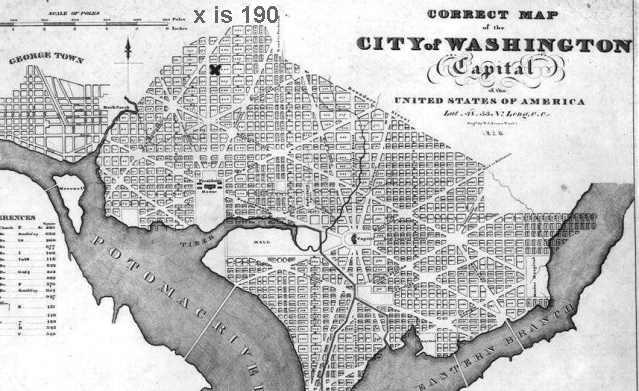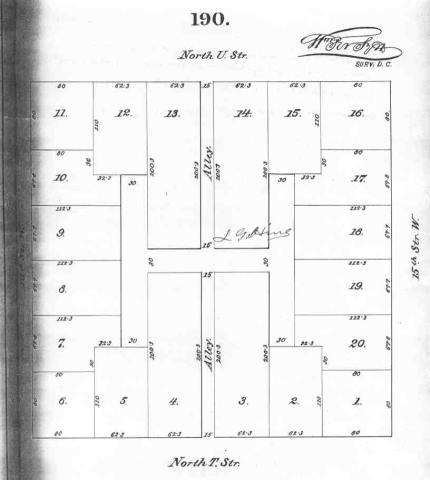
Square 190 marked by "x"
Caroline Street and the City’s Plan
Major L’Enfant’s 1791 Plan for the City of Washington covered an area that stretched northward from the confluence of the Potomac River and its Eastern Branch (today’s Anacostia River), to an escarpment that had been the edge of a vast prehistoric lake.[1] L’Enfant named the roadway that he planned along the escarpment’s base Boundary Street; we know it today as Florida Avenue. L’Enfant’s plan called for the creation of numbered north/south streets and lettered east/west streets radiating outward—north, south, east, and west—from the location of the future capitol building. His planned street grid reflected variations in the existing terrain which accounts for the difference in the size of the resultant city blocks.[2] On this orthogonal street grid L’Enfant superimposed a series of diagonal avenues. The squares, triangles, and reservations thus created were numbered consecutively.

|

|
Above is a copy of part of an 1874 map by E. F. M. Faehtz and F. W. Pratt showing the original platting for Square 190. The lots were much larger than today’s are, and a proposed alley system was planned to access the backs of planned parcels all of which fronted on at least one of the streets bordering the square. The proposed main access alley went through the center of the square from 15th to 16th Street, the approximate location of today’s Caroline Street.[3]
[1] Source: Steve Coleman, Executive Director, Washington Parks and People, 2002.
[2] A good example of this difference in block or square size can be seen by comparing the distance between 17th and 18th Streets and that between 16th and 17th or 15th and 16th.
[3] Source: Real Estate Directory of the City of Washington, D.C., E. F. M. Faehtz and F. W. Pratt, 1874.
<Last update 18 May 2004
Copyright Richard Busch, 1993, 2004
Blanket permission for downloading and reproduction for personal use is given.
Any commercial use without explicit written permission is prohibited.